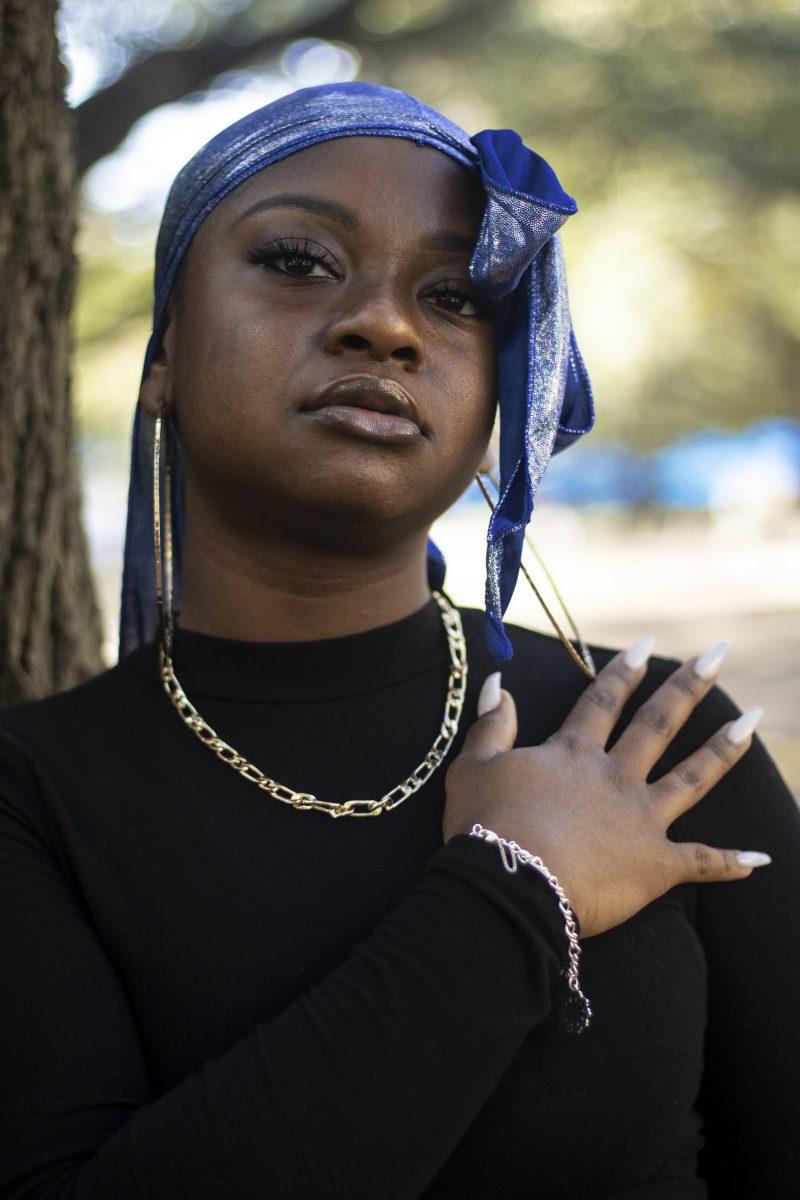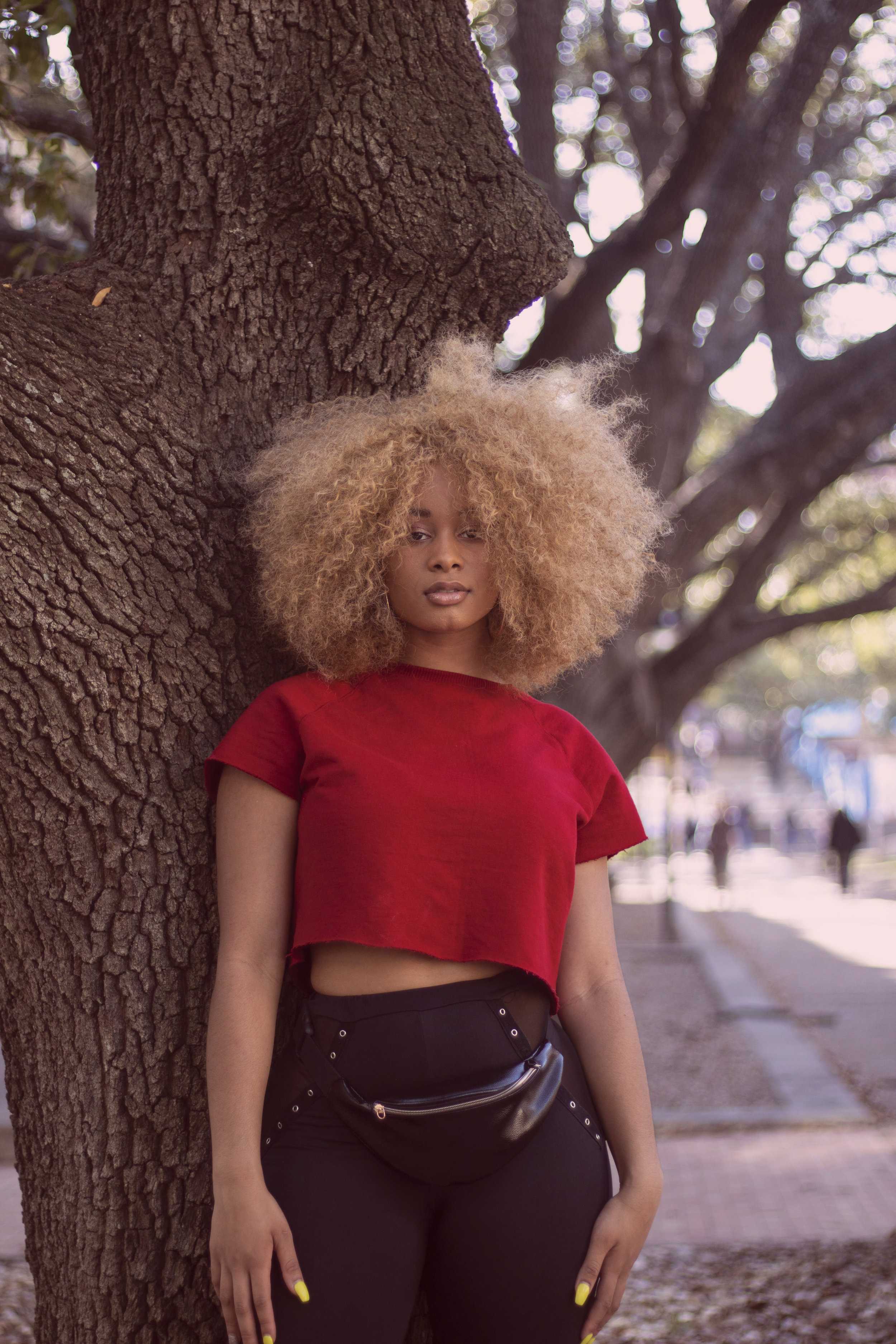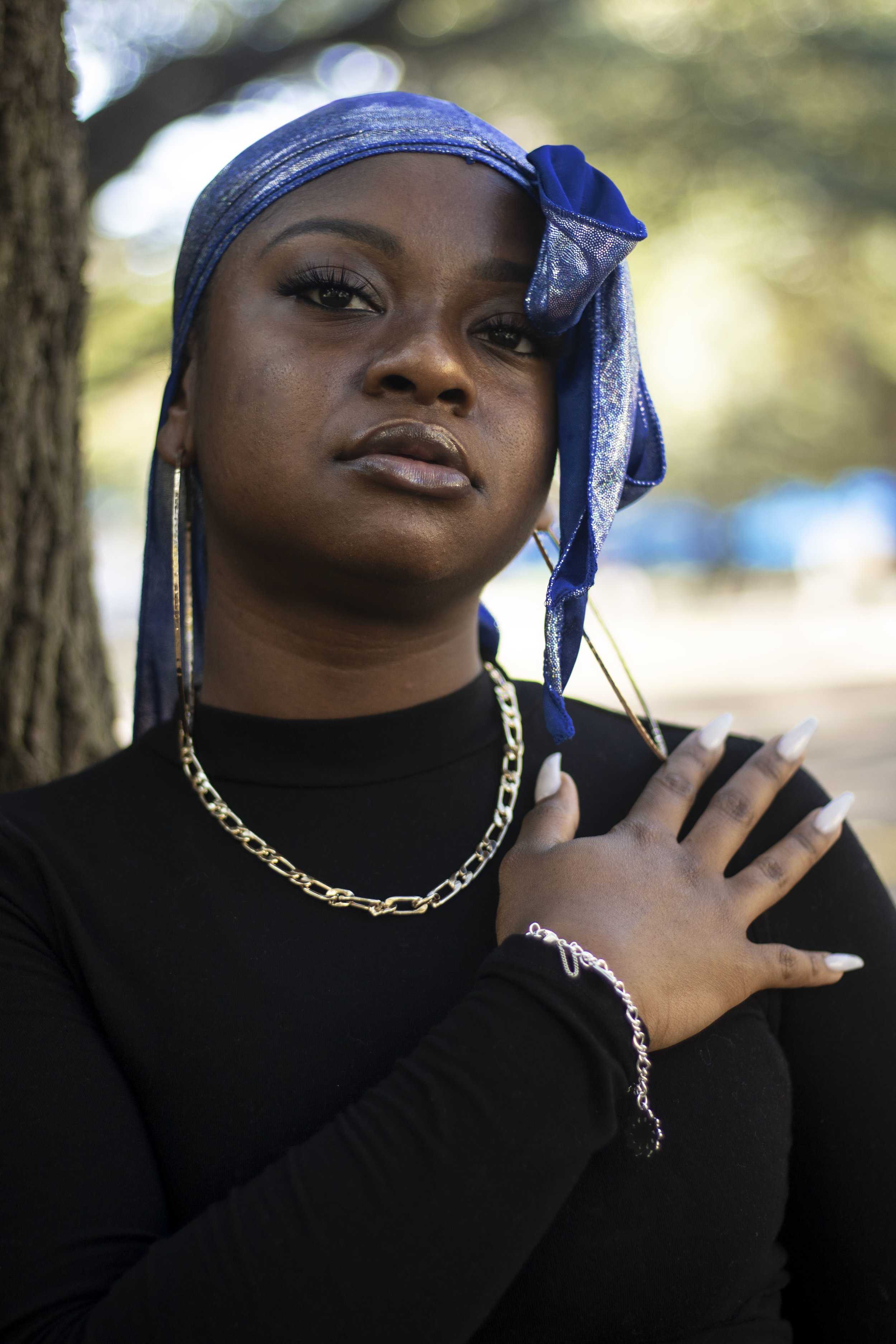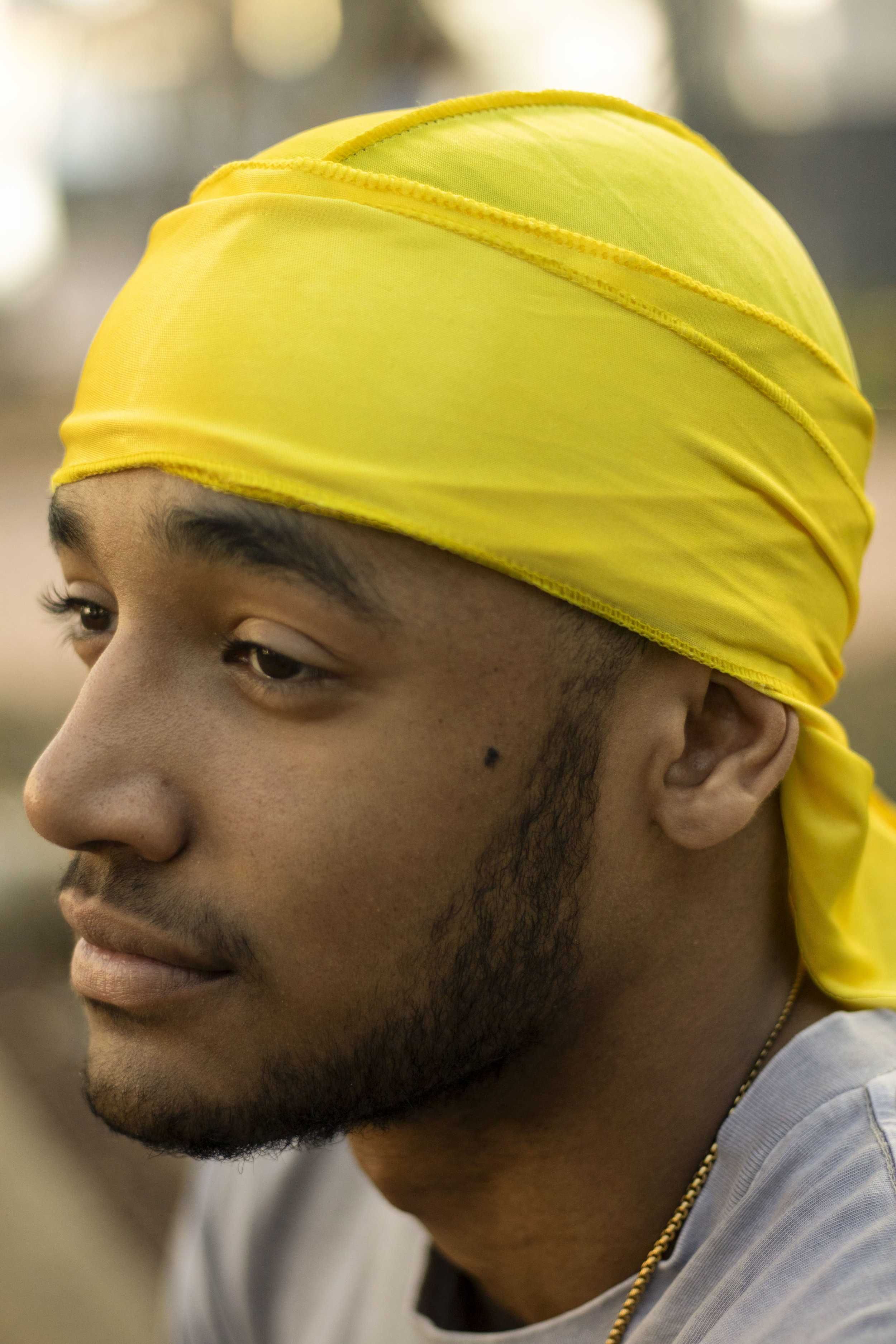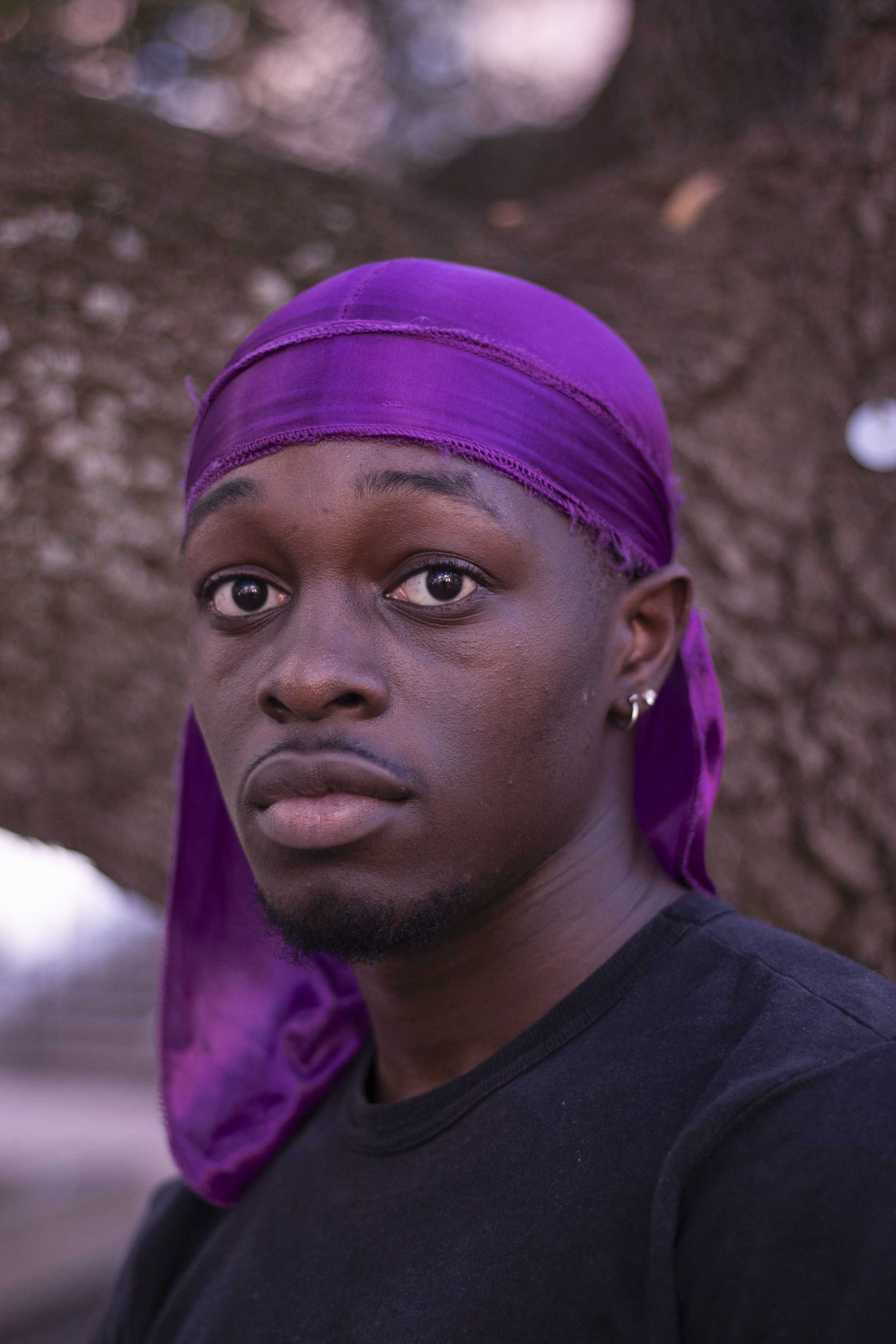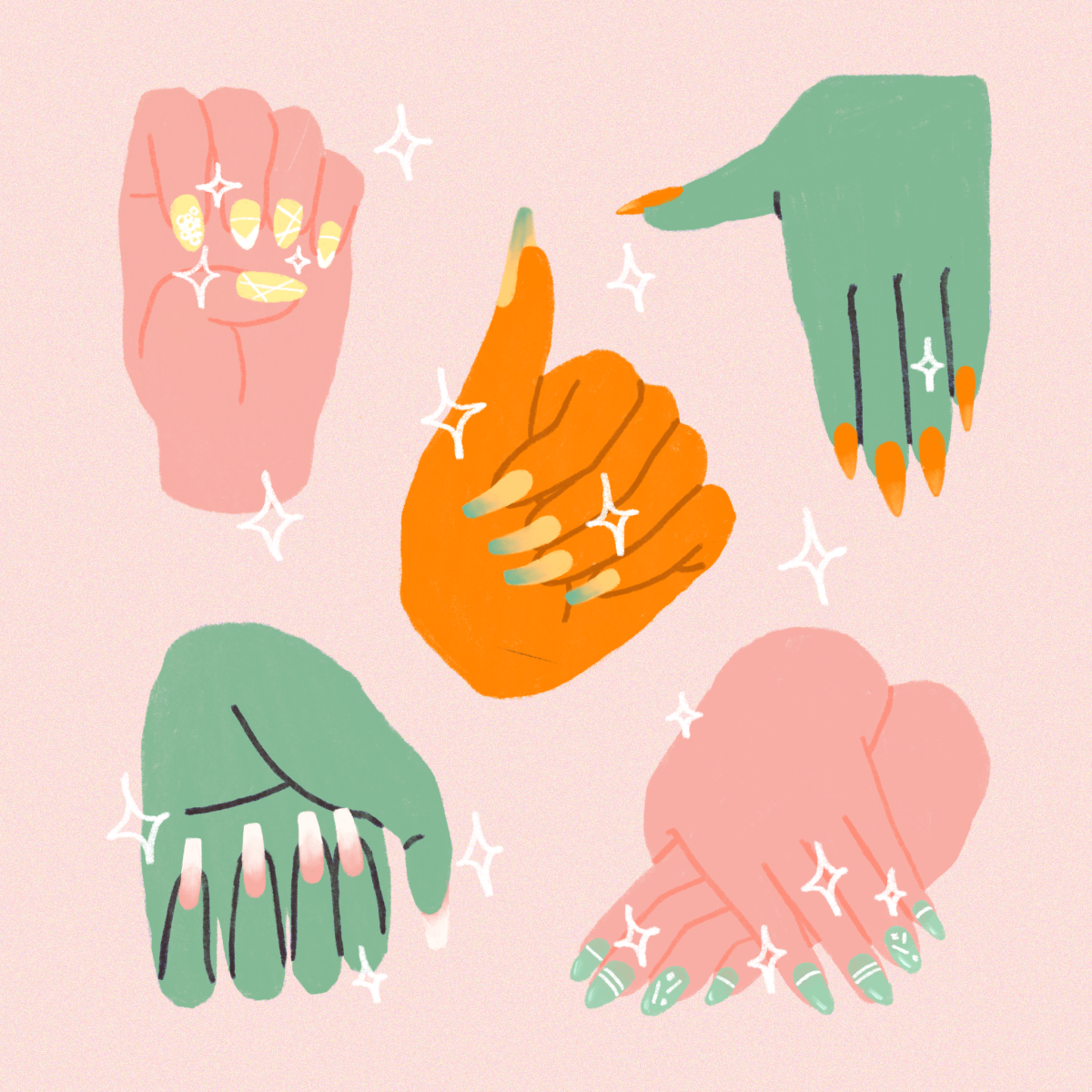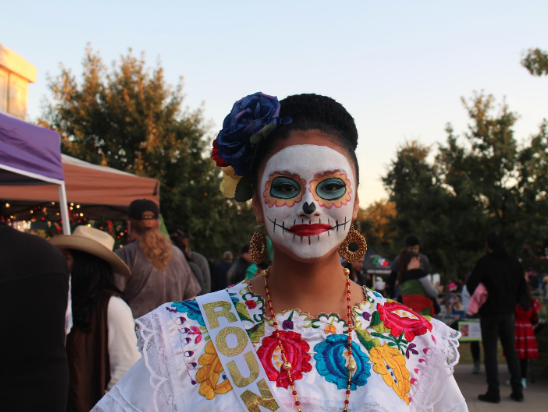After the Durag made its way from local Black hair stores to Hollywood heads, black students started #DuragDay to reclaim their emblem of black beauty.
Story by Faith Castle
Art by Samantha Dorisca
Randi Ford is seen at Durag Day by the Martin Luther King Statue to celebrate Durag Day.
Ford stated “To me, my blackness is powerful. Living in a society where poc are consistently brought
down, being a successful black woman gives me a great sense of pride.”
When Solange Knowles graced the red carpet of the 2018 Met Gala, not only did she make a statement with her famous Florida Water and braided halo, she also donned a unique piece of cloth around her head- a durag.
Durags are hair products that maintain waves or improve the texture of coarse hair. While celebrities such as Eminem and Kylie Jenner have been spotted sporting the headgear, it has historically been used by black people.
Durags arrived in the 1930s during the Harlem Renaissance as a “hair preserver”. Conversely, Darren Dowdy claimed his father William J. Dowdy created the durag as a “hair grooming kit”. According to the New York Times, its original name was “tied-down”.
“The tie down was worn to protect the hair pattern,” Dowdy said to the New York Times.
Despite its origins in the early 20th century, the durag saw its growth as a fashion statement during the Black Power Movement By the early 2000s, durags were being worn by an array of Black celebrities and athletes, such as rapper 50 Cent and NBA All-Star Patrick Ewing.
While the intentional purpose was to serve the needs of Black hair, the hair protector has flowed into high fashion. Not only did Knowles rock a long, black durag at the Met Gala, other celebrities have also shifted the durag as an accessory. Rihanna wore a custom, crystal durag to accept her CDFA Fashion Icon Award and American and fashion designer, Rick Owens used durags to compliment his men’s fashion line during his Spring/Summer Fashion show in 2014.
Even though the durag has earned respect from celebrities across the entertainment industry, its identity still lies within the Black community. Though its grown popular in mainstream fashion, durags are paralled to negative stereotypes of being “ghetto”, “hood”, or “lazy”.
Students across the country took this negative stereotype and decided to turn it into a celebration. In 2017, Morehouse College kicked off #DuragDay to gather students to celebrate durags and bonnets, another silk hair protectant. Soon, this event spread across the nation from Texas State to Syracuse. In October 2017, Black UT students decided to partake in this activity and re-celebrated this day on March 13th.
African and African Diaspora Studies student Shalom Ifeanyi says the durag brings the connectivity of the black community at UT.
“As a culture, it’s important for Black people to define the narrative of what our fashion, art, music, etc. represents,” Ifeyani said. “Therefore, UT Durag Day was a visual way to deconstruct the negative imagery about blackness.”
Through its powerful beauty, the durag has become an emblem for the Black community Designers have taken the durag and turned it into high fashion. The Black UT community represented a variety of patterns and fabrics of durags and bonnets this year, including velvet bonnets. Senior Radio-Television-Film major Ukairo Ukairo’s 2017 Durag Day video reached multiple platforms, including the BET Network. He took pride in capturing the array of bright colors again, this time across the MLK Statue. This year the special day was not only about celebrating durags, but also the win of Camron Goodman and Amie Jean as the first Black president and vice-president student body duo at UT.
“Sometimes we can forget our blackness, what being Black implies,” Ukairo said.
Ukairo described how many times in media, Black people are covered in a negative way whether they’re being killed or wrongly accused. Furthermore, Black people are hyper-sexualized or only captured in photos when they graduate or accomplish something grand.
“It’s not, ‘I’m going to be fine today’,” Ukairo said. “It’s, ‘I’m going to wear a durag today’”.
Even though he’s only worn a durag twice, one of the times being Durag Day, Ukairo believes all black communities should participate in the event whether it’s at a Predominately White Institution (PWI) or Historically Black College or University (HBCU). He describes how events like this help Black students find a community in a predominately white space.
“If you’re Black, you’re present,” Ukairo said. “A lot of the time we turn down our blackness when we enter a space that is predominately white.”
The Black community has found a community through the Durag’s power that accentuates their beauty.
As the entertainment industry uses the durag an accessory, young Black students are trying to preserve its significance to their culture.
“As we continue to be authentic in all areas that we inhabit here at UT and beyond, we will continue to change minds about the stereotypes surrounding,” Ifeyani said.































